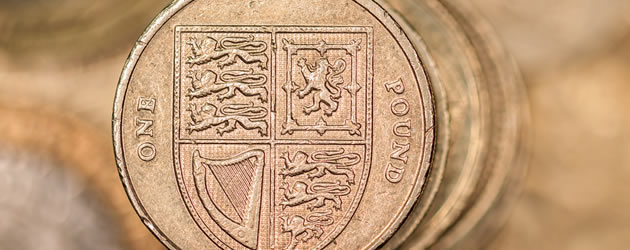The Pound Sterling to Euro (GBP/EUR) weakened on Tuesday following the release of data, which showed that consumer price inflation remained at the record low level of 0% in March.
The Pound Sterling to Euro (GBP/EUR) Exchange Rate Touched a Session Low of 1.3820
Data released by the London based Office for National Statistics (ONS) showed that British Consumer Price Inflation (CPI) remained at the record low level of 0% in March on a year-on-year basis. The figure means that the cost of living is the same as it was last year.
From February to March, prices eased to 0.2% from 0.3%. The data means that inflation has not been so weak since 1989 when comparable data began. The ONS added that when other estimates and figures are taken into account inflation is at its lowest level since 1960.
‘Clothing and footwear prices, overall fell by 0.1% between February and March this year, compared with a rise of 1.8% between the same 2 months a year ago. This is the first time that prices have fallen between February and March since the CPI was introduced,’ said the ONS.
Despite the CPI figure remaining well below the Bank of England’s target level of 2%, few economists believe that the UK is at risk from the type of entrenched deflation seen in Japan. The BoE is also not expected to make a monetary policy response. Last month BoE Governor Mark Carney said that policymakers are looking beyond the current period of low inflation as it has been mostly driven by the sharp decline in global oil prices.
The Pound weakened broadly following the release of the data as Core inflation, which strips out volatile food and energy costs, weakened to its lowest level in almost nine years. The figure fell from the 1.2% recorded in February to 1% in March. Economists had been forecasting for the figure to remain unchanged.
The Euro made gains after data showed that Industrial Production across the Eurozone increased far more strongly than forecast in February. On an annual basis, production increased by 1.6%, smashing economist forecasts for a rise of 0.7%. On a monthly basis, production leapt by 1.1%, a sharp improvement on the -0.1% seen in January.
The Pound Sterling to US Dollar (GBP/USD) Exchange Rate Fell To a Session Low of 1.4599
Also putting pressure on the Pound Sterling was data that showed that the UK’s housing boom appears to be slowing down. According to the ONS, average house prices rose by 7.2% on a year on year basis in January, down from the 8.4% recorded in the first month of the year.
The report means that the average UK house price is £268,000, 0.8% lower than the record level achieved last August. Despite the slight dip, prices are still 11.1% higher than they were prior to the global financial crisis.
As the session progressed the Pound rallied against the US Dollar after US retail sales data came in below economist expectations. The weaker than forecast report raised doubts over the strength of the worlds largest economy and weakened the ‘Greenback’.



